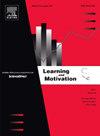广泛训练后的挫败性无奖励完成性连续负性对比任务
IF 1.8
4区 心理学
Q3 PSYCHOLOGY, BIOLOGICAL
引用次数: 0
摘要
在完成性连续负性对比(cSNC)任务中,动物通常接受10次接触32 %蔗糖的实验,然后接受4次接触4 %蔗糖的实验。相对于始终暴露于4 %蔗糖的未移位控制,这种降档产生了一种短暂的完满行为抑制。先前的研究表明,16比4 %的蔗糖差异很少,如果有的话,也很少产生cSNC的证据。我们探索了与典型程序(常规训练,RT: 10次)相比,cSNC出现的可能性(过度训练,OT: 30次)。预期OT会增加奖励预期,从而增强降低对完成性抑制的影响,并可能揭示出通常不会产生这种影响的奖励差异的cSNC效应。这个实验还测试了OT是否会将舔变成一种习惯性反应,而不是对奖励下降的反应。分为5组:32-4/OT、32-4/RT、16-4/OT、16-4/RT、4-4。与32-4/RT组相比,32-4/OT组的cSNC效应更强。在16- 4 %蔗糖的降档中,无论是在OT还是在rt中,都没有观察到cSNC的证据。对降档表现的个体差异分析显示,在16- 4 %蔗糖组中没有cSNC的证据,但在32- 4 %蔗糖组中有显著的cSNC效应。导致更强的cSNC效应(即OT)的操纵仍然不能产生次优奖励差异的效应。此外,没有证据表明OT将舔变成了一种习惯行为。本文章由计算机程序翻译,如有差异,请以英文原文为准。
Frustrative nonreward after extensive training in the consummatory successive negative contrast task
In the consummatory successive negative contrast (cSNC) task, animals typically receive 10 sessions of access to 32 % sucrose followed by 4 sessions of access to 4 % sucrose. Such downshift yields a transient suppression of consummatory behavior relative to unshifted controls always exposed to 4 % sucrose. Previous research shows that a 16-to-4 % sucrose disparity rarely, if ever, yields evidence of cSNC. We explored the possibility that cSNC would emerge with an extended number of preshift sessions (overtraining, OT: 30 sessions), compared to the typical procedure (regular training, RT: 10 sessions). OT was expected to increase reward expectancy thus enhancing the effects of the downshift on consummatory suppression and perhaps revealing an cSNC effect with a reward disparity that usually does not produce such an effect. This experiment also tested whether OT converts licking into a habitual response, failing to respond to reward downshift. Five groups were included: 32-4/OT, 32-4/RT, 16-4/OT, 16-4/RT, and 4-4. A stronger cSNC effect was observed in Group 32-4/OT relative to 32-4/RT. No evidence of cSNC was observed in the 16-to-4 % sucrose downshifts, whether in OT or RT. Analysis of individual differences in downshift performance provided no evidence of cSNC in the 16-to-4 % sucrose groups, but significant cSNC effects in the 32-to-4 % sucrose groups. A manipulation leading to a stronger cSNC effect (i.e., OT) still failed to yield the effect with a suboptimal reward disparity. Moreover, there was no evidence suggesting that OT switched licking into a habitual behavior.
求助全文
通过发布文献求助,成功后即可免费获取论文全文。
去求助
来源期刊

Learning and Motivation
Multiple-
CiteScore
2.90
自引率
0.00%
发文量
53
期刊介绍:
Learning and Motivation features original experimental research devoted to the analysis of basic phenomena and mechanisms of learning, memory, and motivation. These studies, involving either animal or human subjects, examine behavioral, biological, and evolutionary influences on the learning and motivation processes, and often report on an integrated series of experiments that advance knowledge in this field. Theoretical papers and shorter reports are also considered.
 求助内容:
求助内容: 应助结果提醒方式:
应助结果提醒方式:


